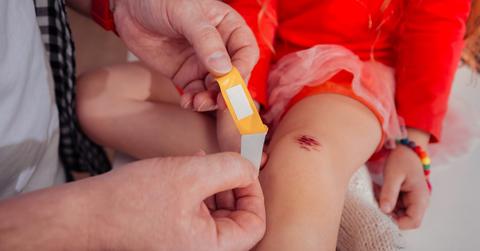Why Do Some People Think Neosporin Is Bad for You?
There are pros and cons to using the cream.
Published June 9 2025, 9:04 a.m. ET

Neosporin is a common first-aid kit essential. The antibiotic ointment is affordable, easy to use, and claims it can prevent everything from infections to scarring. But, there are some who warn people about blindly reaching for the yellow and white tube, claiming that there are some things that people should be aware of before they apply the cream.
But, is Neosporin bad for you, like some people claim? Keep reading to find out what the experts say, including some of the risks and rewards of using the antibiotic ointment on your minor cuts, scrapes, and burns.

Is Neosporin bad for you?
There is good news for anyone who relies on Neosporin for treating wounds at home: The product is not inherently bad for you. Neosporin is considered generally safe for people without allergies to the ingredients, and many healthcare providers recommend it when treating minor injuries or during the healing process.
That said, according to Very Well Health, there are some risks to using the ointment, and one of the big ones is antibiotic resistance.
According to the publication, overuse of the product (and other antibiotics) can cause antibiotic resistance, which is when certain bacteria can no longer be treated by antibiotics because they have become resistant to the treatment. Neosporin has also been blamed for causing Staphylococcus aureus, the bacteria most commonly associated with staph infections.
Additionally, the publication claims that some studies have shown that people tend to heal more slowly when applying Neosporin, which contains an aminoglycoside antibiotic called Neomycin, a cyclic polypeptide antibiotic called Bacitracin, and a polypeptide bacterial antibiotic called Polymyxin, versus other treatments like petroleum jelly.
The American Academy of Dermatology Association actually recommends petroleum jelly for minor cuts.
Very Well Health suggests applying a continuous layer of the jelly on those small wounds as they heal, keeping it moist and clean until it's completely healed.
For the best results, the American Academy of Dermatology Association suggests using petroleum jelly from a tube as opposed to a jar, since this can help keep the jelly from becoming contaminated.
There are times you should avoid using Neosporin.
While there are obviously pros and cons to using the ointment, Very Well Health says there are times when you should avoid using the product altogether.
For example, if you have an injury that appears to be getting worse or bigger over time, you should discontinue using the ointment at once. Additionally, if you have an injury that is located inside your mouth or nose, you should also avoid using the cream as part of your treatment.
Those with diabetes should avoid using the cream because of concerns that it could delay healing. Lastly, the ointment should never be used to treat diaper rash, according to the publication.
Of course, none of this information is meant to be used in place of advice from your healthcare provider. If you have an injury that you have questions about, you should contact your doctor at once, so that you can get information that is relevant to your specific situation.